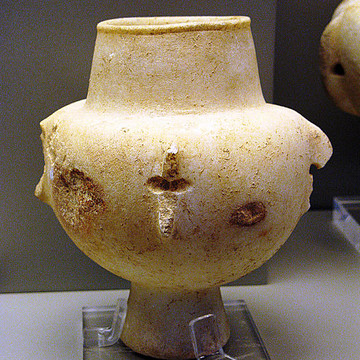Looking for design inspiration? Browse our curated collections!
Joined
2011
Followers
26
Visitors
470,744

Cycladic civilisation
The beginning of a permanent human activity in Cyclades dates at about 5th millenium BC. There exists, however, and earlier but indirect evidence of occupancy for example, samples of obsidian from the Melos has been found in positions in Greek mainland (cave Franchthi Argolida) that is dated at the 8th millenium B.C. In the later neolithic period are dated a lot of discoveries from the settlement that has been excavated in the small island Saliagkos near Antiparos , while the ruins that were found in the Kefala position of Kea belong to the early Bronze Age (3200 BC). At the same time with the early minoan civilization of Crete and the early helladic civilization of Greek mainland, the 3rd millenium was developed in Cyclades the Cycladic culture, as favoured from the geographical position between Greece and the East and from the soft climate. Ruins are found almost in all the islands, even in the smallest ones. The elements tell us for independent small communities with islander character, as the arable land was minimal. Cycladic is the term used for the civilization that developed in the region of the Cycladic Islands during the Bronze Age (3200-1100 B.C). The acme of this civilisation was reached during the first phase of the Bronze age (3rd millenium B.C.) and it is known as the Early Cycladic Period. In Late Cycladic period Cyclades were generally influenced by minoan sea domination. With the destruction of minoan civilization - as a result of the explosion of Thera's volcano (1642 BC) - appeared on the scene the Myceneans. During the 50s and 60s, the characteristic Cycladic figurines (also known as “idols”) – with their sculpted nose, right arm crossed under the left, the slightly bent knee and elevated heels – were sources of inspiration for Western European avant-garde painters and sculptors. Constantin Brancusi, Pablo Picasso, Henry Moore and Amedeo Modigliani viewed the Cycladic figure as the paradigm of modernism and minimalism. Naturally, this led to an ever-increasing interest in Early Cycladic art and, of course, a booming market. Peddlers who had previously referred to these idols as “dolls” and who had given them to children as toys were suddenly being offered staggering amounts for their wares; a thousand drachmas per inch of statue! The illegal excavations that followed resulted in the coordinated destruction of the Cyclades: a total of around 1,600 figurines were unearthed.
Page #1 of 2